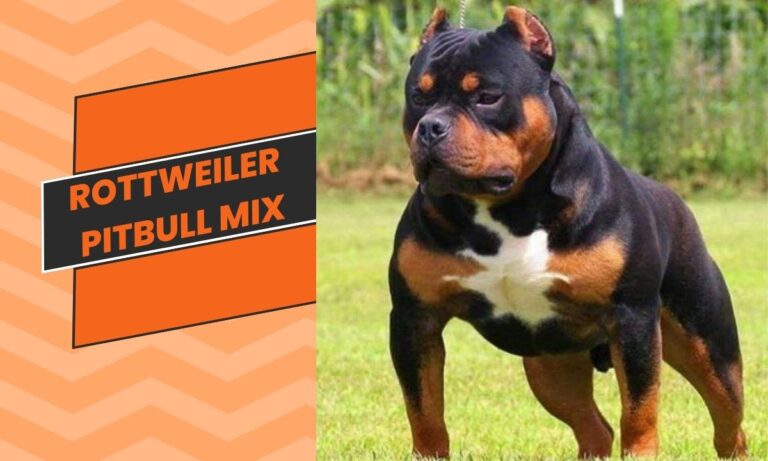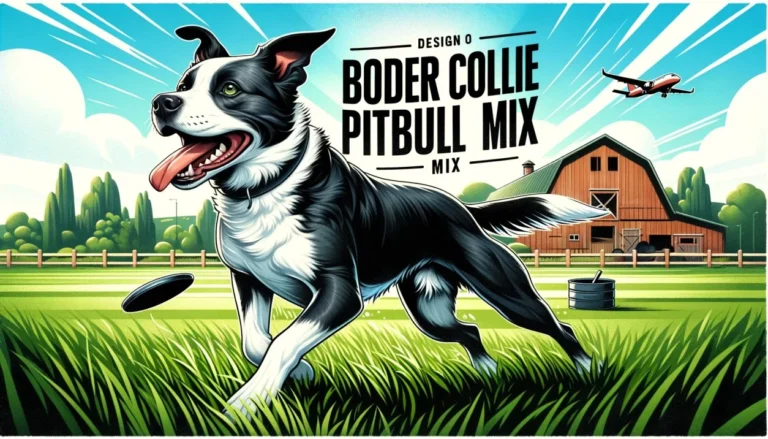The Pocket Pitbull – Ultimate Breed Guide
Introduction to the Pocket Pitbull
In this article, complete information about The Pocket Pitbull is given. the Pocket Pitbull isn’t small enough to fit in your pocket? But, it’s certainly more petite than its full-sized counterpart, making it a favorite for those who adore the Pitbull’s charm but have limited space!

Overview: Dive into the world of the Pocket Pitbull with us. In this guide, we’ll unravel the history behind this unique breed, its captivating physical characteristics, and its endearing temperament. We’ll also provide insights into training, health, and care, ensuring you have a comprehensive understanding of this delightful canine. Whether you’re considering adopting one or are just a curious dog lover, this guide promises to be your go-to resource. Here’s what you can expect:
- A journey through the history and origin of the breed.
- A detailed look at its physical characteristics.
- Insights into its temperament and personality.
- Tips and tricks for training and socialization.
- Essential information on health and care.
- The pros and cons of making a Pocket Pitbull part of your family.
Understanding the Pocket Pitbull
History and Origin
The Pocket Pitbull isn’t an ancient breed but rather a modern-day marvel. Originating from a mix between the American Pitbull Terrier and the Patterdale Terrier, this breed was designed to combine the best traits of both parents. Its unique name, “Pocket Pitbull,” stems from its smaller stature compared to the standard Pitbull, making it seem like a pocket-sized version.
Physical Characteristics
- Size and Weight: Typically, a Pocket Pitbull weighs between 20 to 30 pounds and stands about 12 to 16 inches tall.
- Coat Colors and Patterns: Their coat can come in a variety of colors, including brindle, black, white, and shades of brown. Some may even have unique patterns or markings.
- Distinctive Features: Despite its smaller size, the Pocket Pitbull retains the muscular build and broad head of its Pitbull parent, giving it a robust appearance.
Temperament and Personality
- Behavior with Family: Known for their loyalty, Pocket Pitbulls are incredibly affectionate with their families. They’re great with kids and often become protective of their human pack.
- Interaction with Other Pets: While they can get along with other pets, early socialization is crucial. Their terrier lineage can make them a bit feisty with other dogs.
- Energy Levels: Don’t be fooled by their size; these dogs are energetic and require regular play and exercise.
Training and Socialization
- Importance of Early Socialization: Introducing them to various environments, people, and pets during their puppy phase helps in developing a well-rounded dog.
- Training Tips Specific to the Breed: Positive reinforcement works wonders. They’re eager to please, so treats and praises go a long way.
- Common Challenges and Solutions: Their stubborn streak can be a challenge. Consistency and patience in training are key.
Health and Care
- Common Health Issues: Like all breeds, they’re prone to certain health issues like hip dysplasia and allergies.
- Dietary Needs: A balanced diet with high-quality dog food is essential. Ensure it’s appropriate for their age, size, and activity level.
- Exercise Requirements: Daily walks combined with playtime are crucial to keep them physically and mentally stimulated.
Pros and Cons of Owning a Pocket Pitbull
Pros:
- Compact size suitable for apartments.
- Loyal and affectionate nature.
- Relatively low grooming needs.
Cons:
- Can be stubborn during training.
- Requires consistent socialization.
- Potential health issues to monitor.

Small Adult Dry Dog Food by Royal Canin
Royal Canin Small Breed Adult Dry Dog Food is a specialized nutrition designed for small dogs aged between 10 months to 8 years and weighing between 9–22 lb. Here are some key details about the product:
- Benefits:
- Weight Maintenance: Contains L-carnitine that helps in maintaining a healthy weight and caters to the high energy needs of small dog breeds.
- Great for Picky Eaters: The enhanced palatable formula ensures even the fussiest small dogs enjoy their meal.
- Skin and Coat Health: Contains optimal levels of fatty acids like EPA and DHA that promote skin health and give a shiny coat to the dog.
- Nutritional Information: Small breed dogs have higher energy requirements compared to larger breeds. They need more calories per pound of body weight. Royal Canin Small Adult dry dog food is crafted to meet these unique nutritional needs. It contains L-carnitine that aids in fat metabolism, helping your dog maintain a healthy weight. The food also has ideal levels of EPA and DHA that support healthy skin and a lustrous coat. Moreover, its enhanced palatability ensures even the pickiest eaters are satisfied. The brand also offers Royal Canin Adult Beauty wet dog food for variety in texture. For older dogs, they have Royal Canin Small Adult 8+ and Small Aging 12+ to support their health as they age.
FAQs
What is the difference between a Pocket Pitbull and a regular Pitbull?
The main difference lies in their size. While they share many physical and temperamental traits, the Pocket Pitbull is notably smaller.
How long does a Pocket Pitbull live?
With proper care, they can live anywhere from 11 to 13 years.
Are Pocket Pitbulls good with kids?
Absolutely! Their affectionate nature makes them great companions for children. However, supervision is always recommended.
How much does a Pocket Pitbull cost?
Prices can vary based on factors like lineage and breeder reputation. On average, expect to pay anywhere from $500 to $2,000.
How are Pocket Pitbulls bred?
Pocket Pitbulls are typically bred by crossing an American Pitbull Terrier with a Patterdale Terrier. The goal is to get the size of the Patterdale with the temperament and appearance of the Pitbull.
How big does a pocket pitbull get?
A Pocket Pitbull usually stands about 12 to 16 inches tall at the shoulder and weighs between 20 to 30 pounds.
How many puppies can a pocket pitbull have?
A Pocket Pitbull can have an average litter size of 5 to 7 puppies. However, this can vary based on the individual dog.
What 2 breeds is a pocket bully?
A Pocket Bully is a smaller version of the American Bully. It’s not a mix of two breeds like the Pocket Pitbull. Instead, it’s bred down in size through selective breeding of smaller American Bullies.
What is a pure pitbull called?
A purebred pitbull is often referred to as an American Pitbull Terrier (APBT).
What creates a pocket bully?
A Pocket Bully is created through selective breeding of smaller-sized American Bullies to achieve the “pocket” size standard.
What is the smallest pitbull?
The Pocket Pitbull and Pocket Bully are among the smallest variations of the Pitbull and Bully breeds, respectively.
Do pocket dogs grow?
Yes, like all puppies, Pocket Pitbulls and Pocket Bullies grow. However, their maximum size is smaller than their standard-sized counterparts.
How do you train a pocket bully?
Training a Pocket Bully is similar to training other breeds. Use positive reinforcement techniques, be consistent, start socialization early, and attend puppy training classes if possible.
Can pocket bullies breed naturally?
Yes, Pocket Bullies can breed naturally. However, due to their size and build, some might face difficulties, and in such cases, breeders might opt for artificial insemination.
What do pocket bullies eat?
Pocket Bullies should eat high-quality dog food appropriate for their age, size, and activity level. It’s essential to monitor their weight and ensure they’re not overfed, as they can be prone to obesity.
Conclusion
In wrapping up, the Pocket Pitbull is a compact, energetic, and loyal breed that’s perfect for families and individuals alike. Their unique blend of physical and temperamental traits makes them stand out in the canine world. However, like all breeds, they come with their set of needs and challenges.
If you’re considering bringing one into your home, we hope this guide has been insightful. Remember, every dog deserves love, care, and understanding. So, dive deeper, do your research, and ensure you’re ready to offer a forever home to these pocket-sized wonders!



